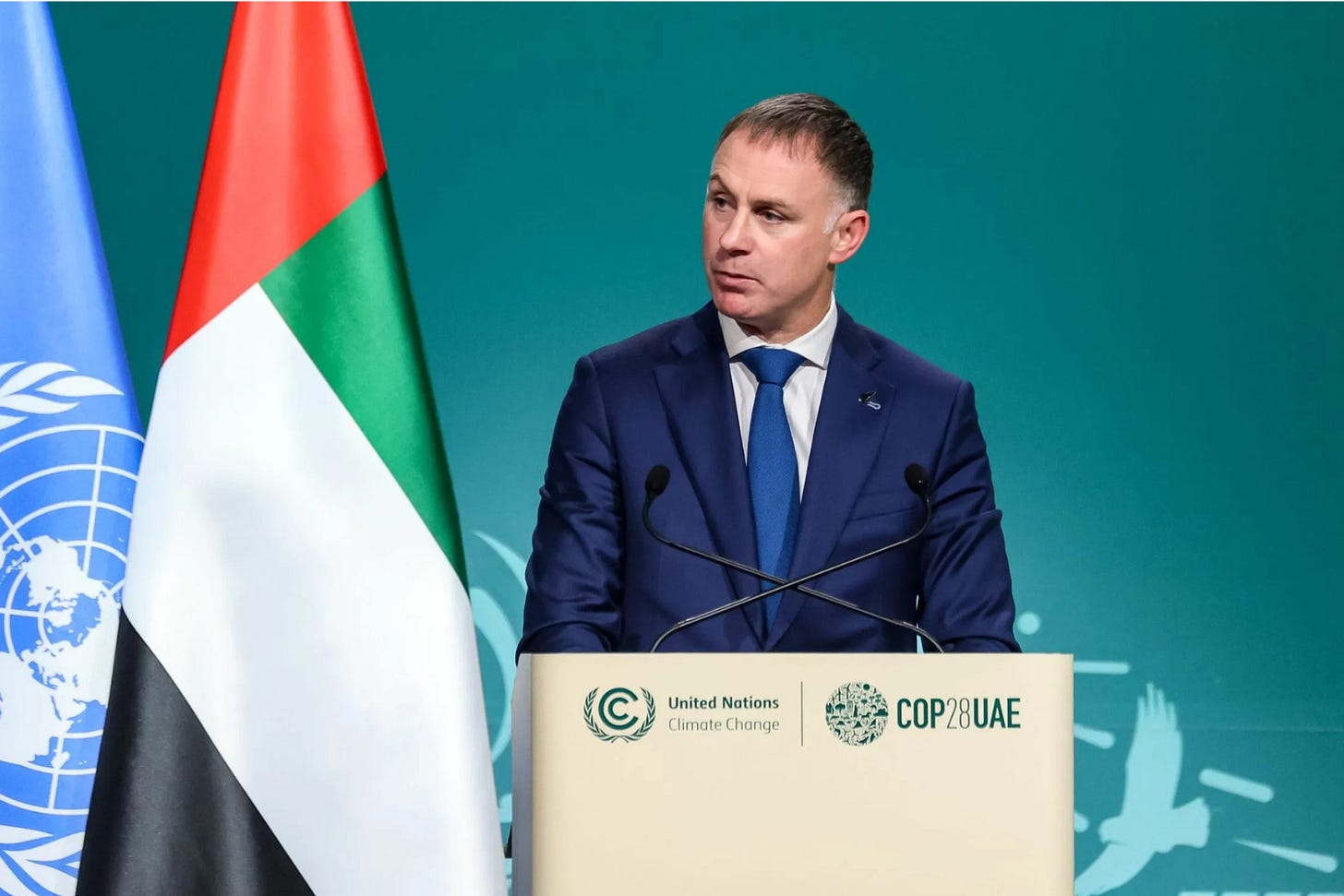Remember COP28? That was 2 years ago, when countries pledged to triple renewable energy capacity by 2030. Let's check in on how New Zealand is going
In 2023, at the COP28 climate summit in Dubai, New Zealand joined nearly 200 countries in endorsing the Global Renewables and Energy Efficiency Pledge.
This landmark agreement committed nations to triple global renewable energy capacity to at least 11,000 GW by 2030—effectively a 200% increase from 2022 levels—while doubling the global rate of energy efficiency improvements to over 4% annually.
For New Zealand, already a renewable energy outlier with ~85% renewable electricity, the pledge aligned with domestic targets: 90% renewable electricity by 2025, and an aspirational 100% by 2030, alongside 50% renewables in total final energy consumption by 2035.
These goals were meant to propel the country toward net-zero emissions by 2050, leveraging its hydro, geothermal, and wind resources.
Two years on…
The world has barely budged: national targets have risen just 2% globally, leaving a 3.7 TW gap to the tripling milestone.
New Zealand fares no better, with progress hampered by policy U-turns, energy shortages, and underwhelming capacity additions.
What started as bold climate leadership now looks like a hollow promise, exposing the chasm between rhetoric and results.
New Zealand squandered a decent head-start
In 2023, renewable electricity hit 88.1%—a record—fueled by hydro (60%), geothermal (18%), wind (7%), and nascent solar. Total renewable capacity stood at ~8.3 GW, per IRENA data.
Broader energy supply was 44% renewable, up from 40.8% in 2021, thanks to biomass in industry and geothermal expansions.
The 2018 ban on new offshore oil and gas exploration was hailed as a catalyst for renewables, aiming to displace fossil fuels amid declining gas production.
Domestic pledges amplified the global call: the Emissions Reduction Plan (ERP) targeted 95% renewable electricity by 2030 (up from aspirational 100%), with electrification driving the 50% total energy goal.
COP28’s tripling implied New Zealand scaling to ~25 GW by 2030—a 200% jump requiring ~2.5 GW annually. Officials projected 2-3 GW of additions by decade’s end, but reality has diverged sharply.
Let’s check-in on how the NZ COP28 pledge is going
New Zealand’s renewable electricity share dipped to 85.5% in 2024, below the 2023 peak and shy of the 90% 2025 target. Capacity grew modestly—556 MW added in 2024 (mostly wind like Harapaki at 176 MW and solar like Lauriston at 47 MW)—pushing totals to ~8.9 GW. That’s a ~7% increase since 2023, far from the 20%+ annual pace needed for tripling.
Total renewable energy supply hit a record 45.5% in 2024, but absolute production fell 2.6 PJ due to gas depletion and dry hydro inflows. Fossil fuels still claim 54.5%, with oil dominating transport (99%) and gas peakers filling 14.5% of electricity during droughts. EV adoption lags the 50% sales target by 2029, and industrial electrification stalls amid high costs.
Why the lag? Blame it on policy jihad
The July 2025 reversal of the 2018 oil/gas ban epitomises the disconnect. Citing gas shortages (down 27.8% in early 2024) and price spikes (households up 25-30%), the Luxon government injected NZ$200 million to revive exploration. This “pragmatic bridge” to firm renewables contradicts COP28’s fossil phase-down, diverting funds from solar/wind while new gas won’t flow until 2035+.
Was COP28 promises all fluff? Is climate change a scam?
New Zealand’s renewable pledges aren’t outright fraud—they’ve delivered gains, like geothermal hitting 24% of supply in early 2025 and solar doubling since 2022.
But our audit reveals a pattern of aspirational fluff: the 90% miss signals deeper woes, and tripling feels like virtue-signaling when actual adds average 300-500 MW yearly versus 2.5 GW required. This isn’t just NZ’s failing—globally, ambitions cover only a doubling, per Ember.
For a “clean, green” nation like New Zealand, the gap stings: higher bills, blackouts risks, and fossil relapse undermine the narrative. The climate agenda’s rigidity—banning gas without backups—fuels scam accusations, prioritising optics over affordability.
As Elon Musk brilliantly puts it: “climate change action in the short term is highly inflated.”
Time to chart a new and realistic path forward
Drill more and build oil/gas reserves: Gas production crashed 27.8% in 2024, idling industries and spiking prices. The 2025 ban reversal and NZ$200 million gas fund are steps toward energy security, but bolder action is needed. Fast-track exploration permits. Streamline consenting for gas fields in Taranaki and beyond. Maintain oil imports post-2022 refinery closure but explore reopening Marsden Point for domestic refining.
Invest in nuclear energy exploration: New Zealand’s nuclear-free policy since 1984 bans nuclear power, but global advances in small modular reactors (SMRs)—compact, safe, and low-waste—offer baseload potential that renewables can’t match. SMRs could provide 300–600 MW per unit, rivaling geothermal’s reliability without site constraints. Nuclear could replace gas peakers, cutting emissions while ensuring 24/7 power.
Reduce inflated short-term climate change promises: Pledges like 90% by 2025 and tripling by 2030 overpromise what renewables can deliver. The 85.5% electricity share and 45.5% total energy in 2024 show progress, but 100% renewables by 2030 requires unfeasible grid/storage leaps. Hype will only lead to public distrust, with more people believing climate change is a scam.



